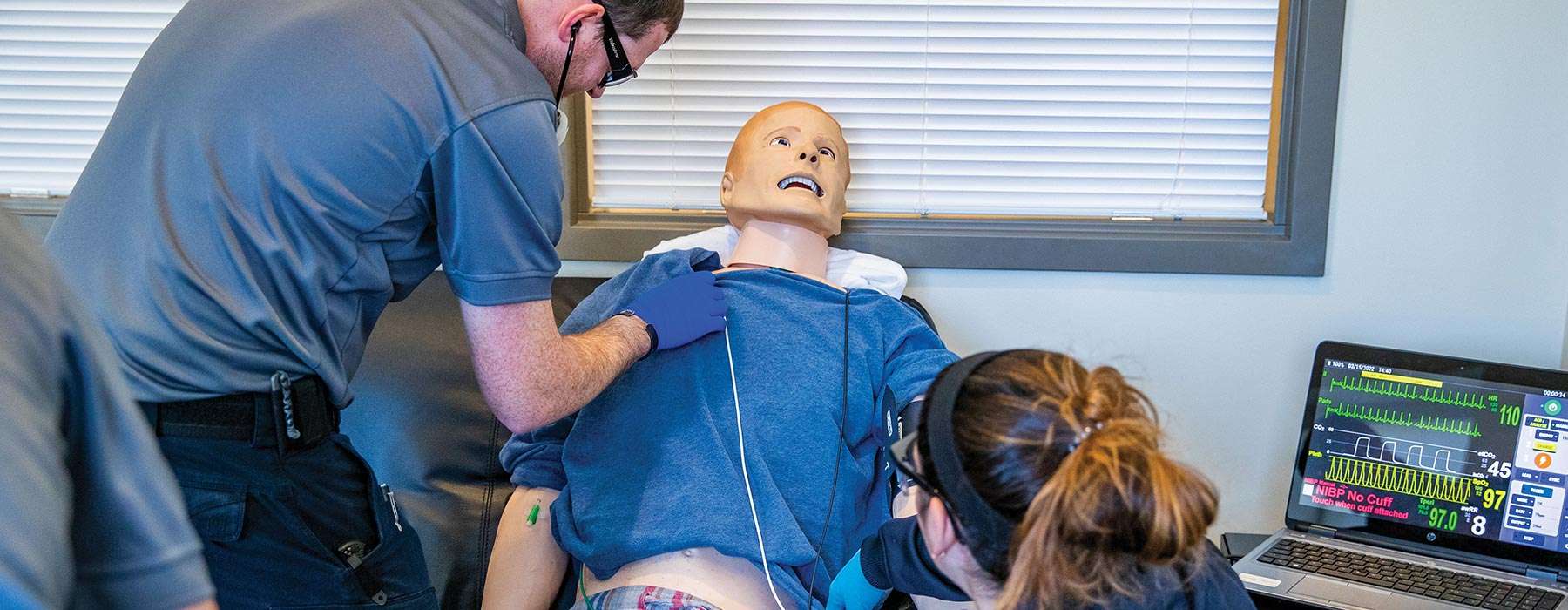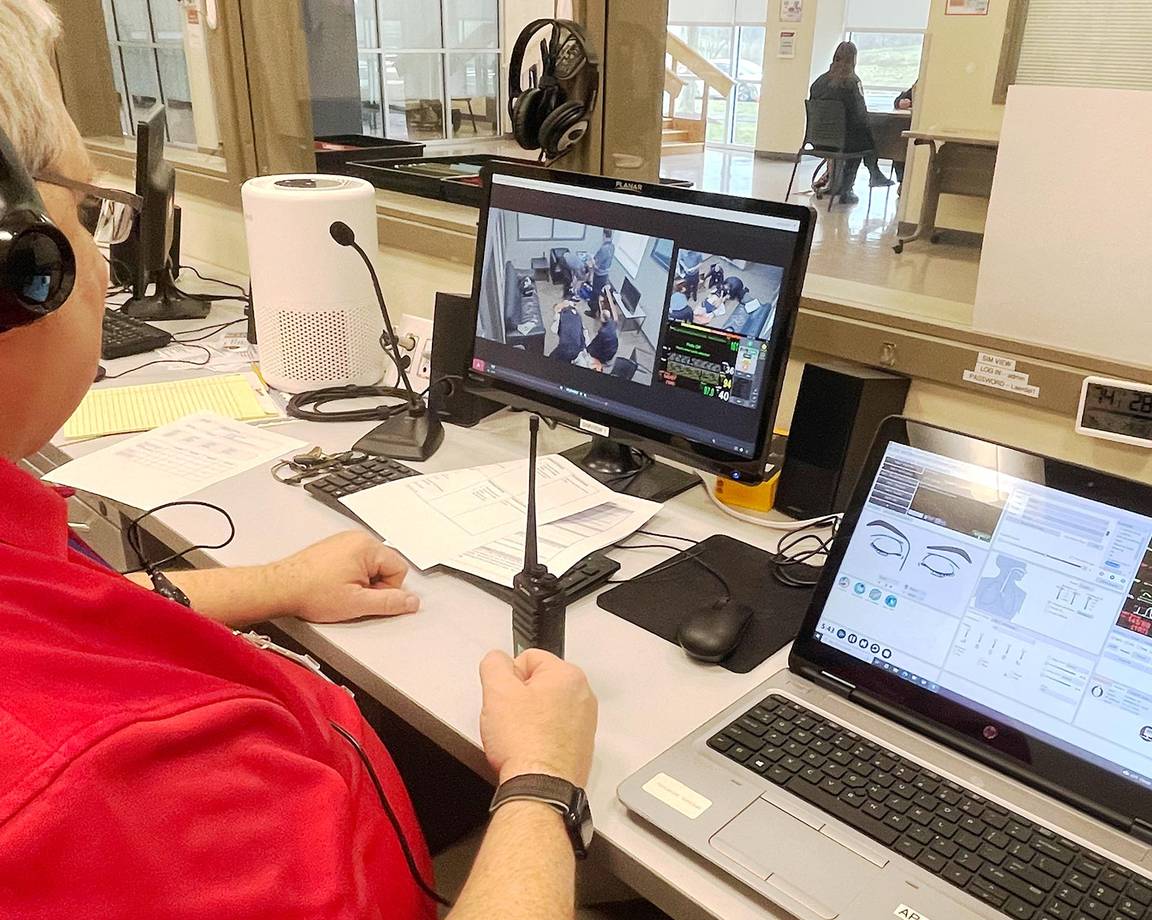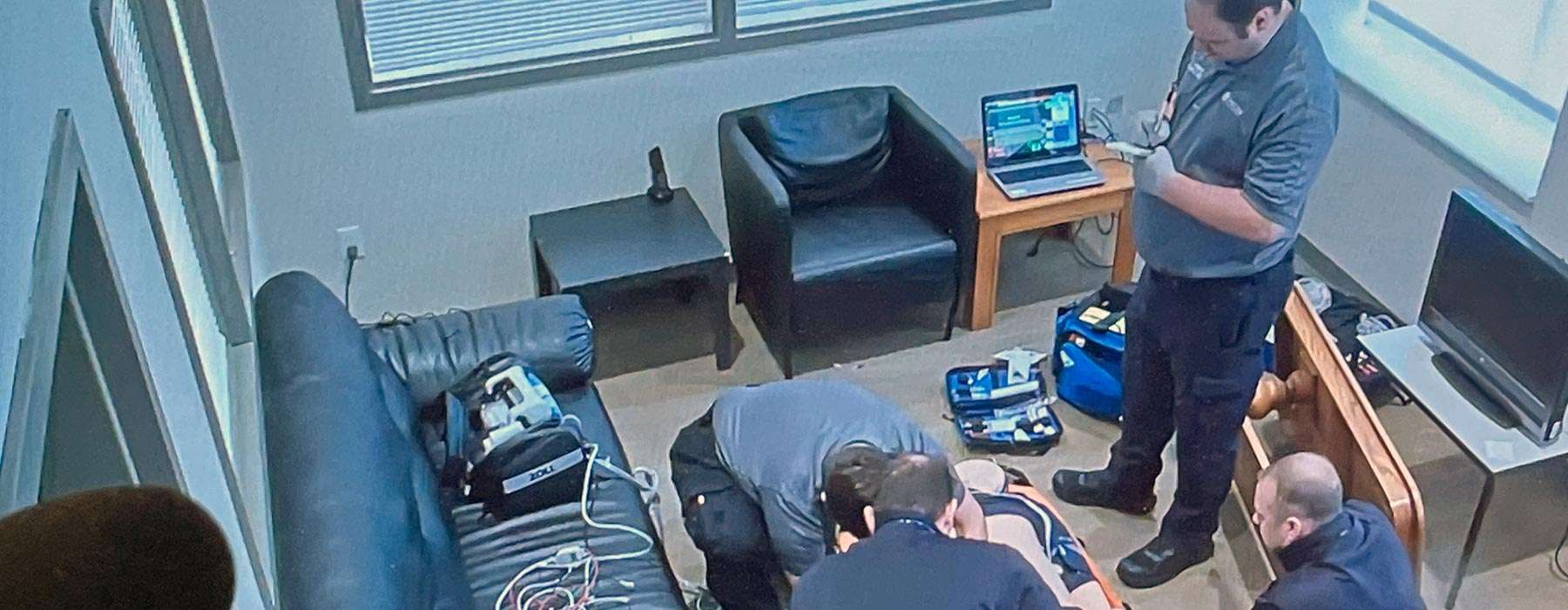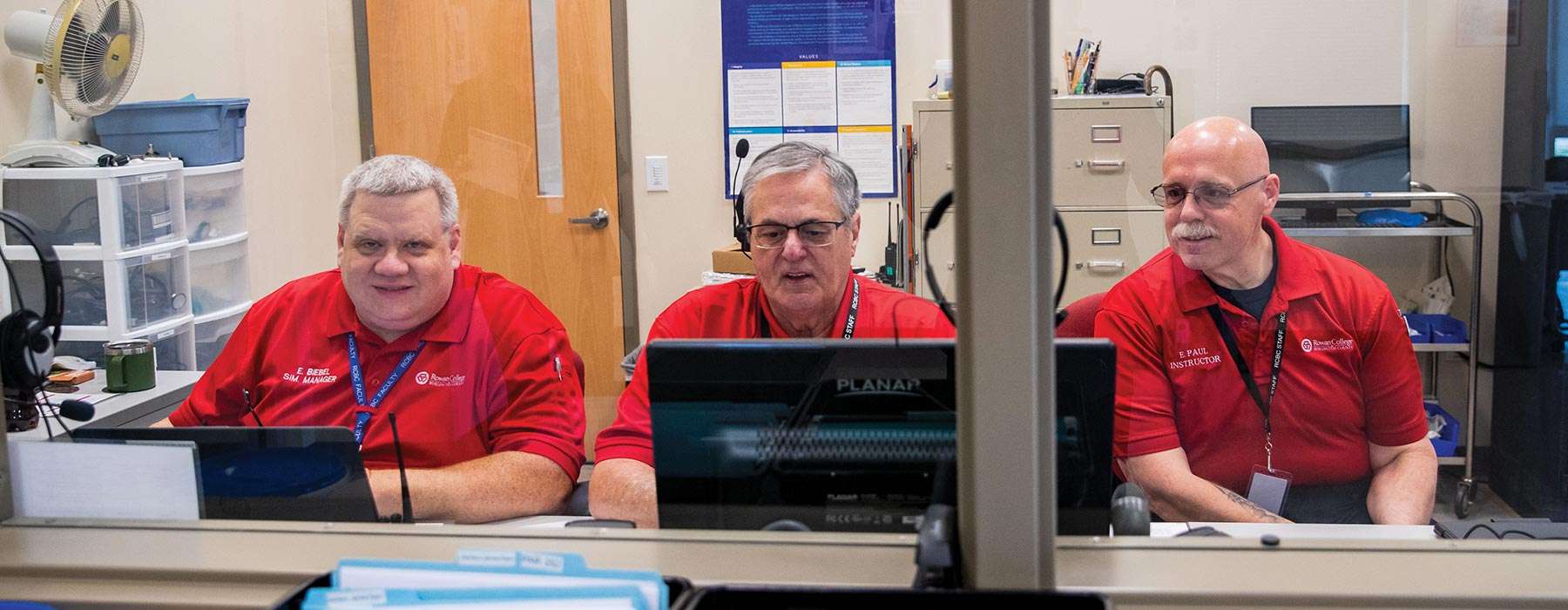Preparing Paramedic Students with Video-Assisted Debriefing at Rowan College
Customer Story

Customer Story


Rowan College at Burlington County in New Jersey currently serves about 35 to 40 students per semester in its hybrid paramedic program.
The challenge
Ed Biebel is the Clinical Simulation Manager of the School of Paramedic Sciences at Rowan College at Burlington County in New Jersey. He is dedicated to using simulation to provide essential hands-on learning opportunities that give his students the confidence and autonomy they need to be successful in the field.
- Ed Biebel
Clinical Simulation Manager, Rowan College at Burlington County

"They need to have solid clinical judgment," he explains. "They have to make a differential diagnosis and treat those patients, often without the ability to interact with any other health professional."
In his simulation program, Ed focuses not only on key psychomotor skills, but also on helping his students develop skills in the affective domain: behaviors like compassion, empathy, communication, self-confidence, and teamwork.
"Developing an affective domain is critical," he says. “They're not used to interacting with different people, especially populations that they don't come into contact with – whether that's the geriatric population or pregnant population. The ability to talk to a patient and build that rapport is critical."
"Delivering bad news, dealing with difficult partners, telling somebody that their loved one has died, identifying elder abuse … it’s a fairly broad spectrum of things that we do in simulation," he adds.
The solution

Ed knew that high-quality simulation, paired with thorough simulation debriefing, could help his students build competence. He also knew that video would play a key role in that, by allowing learners to actually see their performance.
"When we're live in an environment, we have our own internal perception of what’s going on," he explains. "They have one perception of how an event went when they were live in it, but when they go back and watch the video, they say, 'I see now.'"
To ensure high-quality debriefing practices, Ed decided to enlist the help of SimCapture. SimCapture is a comprehensive, cloud-based simulation management system that would allow him to maximize his simulation training efforts through video-assisted debriefing. SimCapture wouldn’t just capture the video for him – but it would help him manage the videos in a useful way. SimCapture would allow Ed to:
"I can tag moments in the video,” he explains. "The minute I press 'stop', it’s available for the instructors and students to do the debriefing."
The Results

Using video for debriefing helped Ed bring students to a new level of self-awareness in areas like:
Awareness of time. "In any high-stress situation, there's time dilation," he explains. Having video for debriefing allowed him to show students how much time really elapsed during the scenarios. For example, he could show a student the video and explain, "This patient started to deteriorate earlier than you realized. Let’s look at vital signs. Notice this vital sign was already changing. That was your clue that something was starting to happen – and it’s important to catch those clues."
Refining psychomotor skills. By capturing and zooming in with the SimCapture camera, he can easily highlight issues with techniques like intubation. Then he can talk the student through their technique and how to improve it.
Body language. "One of the things that we hear all the time, especially with the affective domain, is that the students have never looked at their own body language," he says. "So while they think they're being polite and building rapport, they go back and look at the videos. We had one student who said, 'I didn’t realize how angry I looked, talking with a patient.'"
"That’s one of the things we love that our students are able to do," he shares. [It's] a huge win for the students – because we have a lot of them come back and say, ‘I didn’t realize what I was doing.'"
Storing video in the SimCapture Cloud allowed Ed to give students the opportunity to watch the videos and review the annotations at home.
"While we can debrief them in real-time if we want, often we allow the students to go home, relax, and then they can view the videos in comfort and privacy, reflect on what we've talked about during their debriefing after the sim, and then look at the video and see how what happened fits with what they understood was going on and what our feedback was in our debriefing session."

Ed uses the SimCapture Mobile Camera for greater flexibility in where he can conduct simulations. It allows him to go hardware-free, freeing him up to run simulations everywhere, from the storage room to an office.
"We're very space-constrained in our lab. Now, anywhere in our Health Sciences building has become a place where we can run a simulation. We can give the student a different environment in which to work."
"Wherever we want our sim lab to be that day, that's where it is," he says."It's my favorite thing."
He's currently part of a team planning a major school-wide interdisciplinary simulation that will incorporate the paramedic science program and other allied health programs, including nursing, dental, x-ray, and diagnostic medical sonography. "I don't think we'd be able to do that without the SimCapture Mobile Camera app," he says. "It has really given us the ability to do a lot more to create realistic environments for our students."

Beyond using the videos for debriefing, Ed also utilizes the videos in other ways:
Ed also uses the powerful insights that the SimCapture platform generates – including:
Simulator utilization data
“We can tell how many hours the manikin was used during sim. We used this to help justify the purchase of a new simulator by being able to show how many hours per semester per year the simulators are used, and how many students are interacting with it.”
Documentation of student activity
"In paramedic education, there’s a lot of documentation...for instance, students have to have certain counts of procedures done," he explains. "We’re able to go back and say, ‘Here are the five videos where the student performed a specific skill.'"
"It gives us something we can show the administration from the college," he says. "The first thing that we do is bring up videos of the simulations and say, 'Here's how the students in this program are using what you spend all this money on.'"
- Ed Biebel
Clinical Simulation Manager, Rowan College at Burlington County

When using video-assisted debriefing with SimCapture, Ed knows it’s critical to make sure that students feel comfortable with the process.
"I tell the students from the beginning: ‘We don't want you to ever think that you failed a simulation. We’re teaching you and we're giving you the experience to work in real-time – and to try things to push your skills to critically think [and] understand things differently.'"
"'Sometimes you're going to use your judgment and get it wrong,'" he adds. "'Or maybe there was a better pathway, and we can discuss that. But it's never used to embarrass [you]. It's the opportunity to learn.'"
![]()
Video-assisted debriefing with SimCapture can increase learners’ self-awareness, from their psychomotor skills to their affective domain skills.
![]()
Students can reflect on their performance at home when they’re in the right frame of mind to benefit most from it.
![]()
From providing data insights, to facilitating simulations anywhere, to supporting quality assurance, SimCapture has helped Ed streamline many areas of teaching and operations.